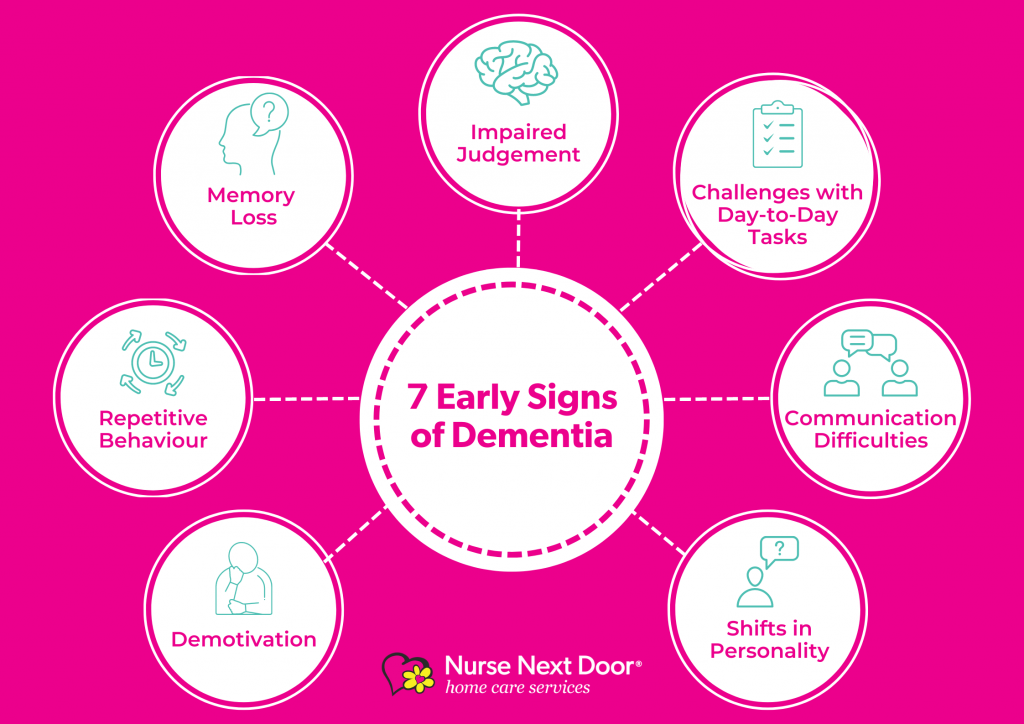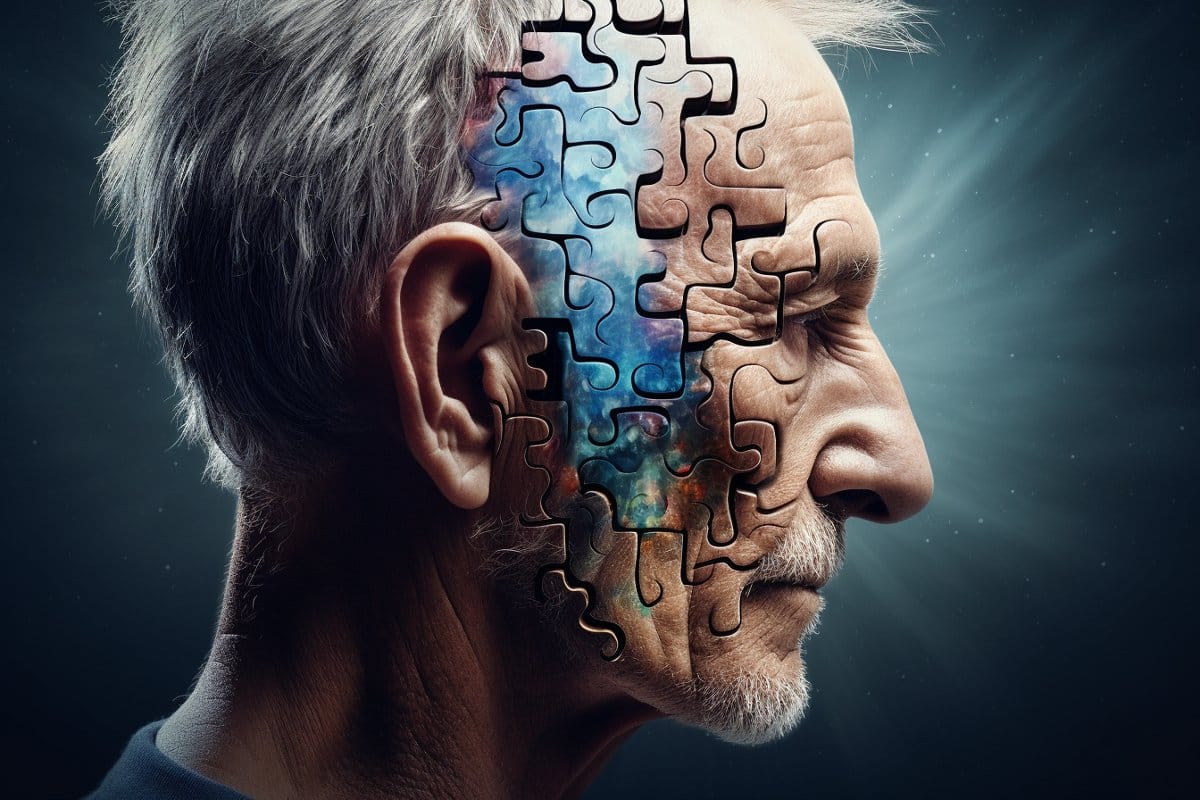Dementia
What are the signs of dementia—and why is it so hard to diagnose?
There are many different types of dementia, and how it manifests depends on which part of the brain is damaged. Here’s what we do and don’t know.
Beginning in his early 70s, there were signs that Steve Selvin wasn’t himself: he could tell stories about the past but was oddly reserved about the present. A renowned statistician, he’d retired from his teaching post at the University of California Berkeley. “We thought it was anxiety or depression,” says his daughter, Liz Selvin.
Selvin’s behavior—easily mistaken for other mental health issues because it changed gradually—was a symptom of dementia. The professor was adept at concealing his growing cognitive impairment—until he couldn’t, Liz says. Her dad began letting strangers into the house. He repeated himself. Forgot what he ate for breakfast. Now, a decade later, he lives in a memory care facility in California.
Alzheimer’s disease and related dementias affect so many people—more than 55 million worldwide and at least 6.5 million in the United States—that many of us know, or have known, someone who suffers from it.:max_bytes(150000):strip_icc()/difference-between-alzheimers-and-lewy-body-dementia-98749_final-8498478f530b4c499cd623b82ff806b7.jpg)
The long journey to diagnosis for celebrities like actor Bruce Willis—who has frontotemporal dementia—is raising awareness of just how difficult it can be to pinpoint the form and cause of these brain ravaging diseases.
Dementia is a syndrome caused by many diseases or injuries that destroy brain cells and sever the synapses that connect them, says Timothy Rittman, a neuroscientist at the University of Cambridge, in the United Kingdom. It progressively impairs the ability to think, reason, control mood and behavior, and maintain mobility. It diminishes life so severely that patients can’t handle even simple daily tasks without help. At one point, Steve Selvin, a math genius, couldn’t operate an ATM.
While it mainly affects older people, “it’s not part of normal aging,” Rittman notes.
How dementias manifest depend on what part of the brain is damaged. Some forms are somewhat manageable. Few are reversible. Just one type, caused by leaking spinal fluid, is curable, and there are poor treatment options for the others, says Wouter Schievink, a neurosurgeon at Cedars-Sinai Medical Center in Los Angeles. “There are few medications out there and they're very high risk, low benefit.”
The financial costs for care are staggering. The World Health Organization estimates that dementia cost global economies $1.3 trillion in 2019, the most recent figure. About half of the responsibility for care falls on family members and friends, mostly women, which extracts a serious emotional and physical toll.
Research is beginning to illuminate the causes and risk factors—from genetic predisposition or lifestyle choices to injury or knock-on impacts from other diseases. But much remains unknown.
Common symptoms
Risk increases with age and there are a wide range of early symptoms. Some can be easily dismissed in a society where many people are overtaxed and multitasking: forgetting and misplacing things, losing track of time, or getting lost while driving.
But when confusion reigns most of the time—daily tasks are challenging, it becomes difficult to speak, remember words, handle money, or visually judge distance—a diagnosis becomes simpler.
For some, personality changes precede memory problems: People become edgy, anxious, aggressive, sad, or angry. They may withdraw from others or behave in inappropriate—or shocking—ways.
“With dementia, the decline is not linear,” says Melissa Toms Minotti, a researcher at Johns Hopkins Bloomberg School of Public Health in Maryland whose knowledge of the condition is both professional and personal. For both her father, Richard Toms, and dementia patients she’s seen in the research center, “every day was a different day.”
Alzheimer’s, Lewy body, and vascular dementia
The most common and well-known type of dementia is Alzheimer’s disease. Researchers estimate it may cause some 5.8 million dementia cases in the U.S. This number is projected to reach 14 million by 2060, according to the U.S. Centers for Disease Control and Prevention.
The two prime suspects behind this disease are clumps of proteins known as plaques and tangles that damage and kill brain cells. A protein fragment called beta-amyloid accumulates into plaques between nerve cells. Tangles—entwined fibers of another protein, tau—build up inside cells. When nerve cells have toxic materials around them, they die.
Other diseases or injuries cause dementia by impacting the brain directly or indirectly. More than 1 million Americans suffer from dementia with Lewy bodies. It’s the second most prevalent type, characterized by abnormal deposits of a protein called alpha-synuclein in brain nerve cells that control thinking, memory, and movement. Patients may also experience recurrent hallucinations, tremors, or rigidity, erratic blood pressure, heart rate, or other automatic body dysfunctions.
High blood pressure, or anything that interrupts a steady flow of blood and oxygen to the brain can cause a third condition called vascular dementia. Symptoms can strike suddenly or come on gradually. Though stroke doesn’t always result in vascular dementia, “with multiple strokes, enough of your brain dies that you just don't have enough healthy tissue to function,” says Josef Coresh, who will launch a new Optimal Aging Institute at New York’s NYU Langone Health in November.
One type of frontotemporal dementia damages the brain’s frontal lobes, altering personality, social conduct, and the ability to control emotions. Another, caused by damage to the temporal lobes (located on either side of the head near the ears) causes people to lose vocabulary, speak with difficulty, or forget what everyday objects are used for. It can be genetic, like other dementias, and can hit earlier, in midlife.
Viral infections, including viral encephalitis, influenza, and Herpes simplex, have also been linked with dementia, as well as heavy alcohol intake or brain injury.
Inflammation is a factor, says Rittman. With invasion of a virus, a stroke, or a hit on the head, the brain’s unique inflammatory cells flood in and try to repair the area. They leave a scar that disrupts normal function and interrupts connections between brain cells, Rittman says. “And it may be the inflammation that causes these proteins [in the brain] to change.”
Hearing loss, which affects most people over 70, that can also contribute to dementia. Certain prescription medications also pose risk, including those used to treat heartburn, depression, incontinence, symptoms of Parkinson’s disease, and other health problems.
Complicating matters further, research now shows that many people have “mixed dementia” that may be triggered by several factors, which may partly explain why symptoms vary between individuals.
What we do and don’t know
Coresh calls the brain “the last frontier” because it’s such a complex organ. He contrasts its functions with the heart. “The heart is a muscle and plumbing that you can observe. The brain, however, is an electrochemical machine at a very fine nano scale. It’s massively networked, with dozens of nuclei and billions of pathways.”
A great deal is known about what different parts of the brain do and how they link together. The next step, Coresh says, is linking chemical changes to brain network changes to changes in behavior.
Rittman notes that under the microscope, you see buildup of certain clumps of proteins within and around brain cells. “What do these proteins do? To brain cells? To decrease cognition?” he asks. “That’s the million-dollar question in dementia.”
Identifying who is at risk
In people who carry a genetic mutation that dramatically raises the risk of Alzheimer's disease or frontotemporal dementia, changes in brain function can appear decades before symptoms appear. To find out whether this was true for other groups, Rittman and other Cambridge scientists analyzed data from the U.K. Biobank, which contains information from a half-million participants on their health, genetics, lifestyle, and mental acuity. After excluding those with diagnosed dementia, cognition tests revealed clues that neurological decline may be seen as early as nine years before diagnosis.
Coresh and a team from Johns Hopkins University School of Medicine teamed up with the National Institute on Aging, using a different approach from the U.K. team. They searched the blood plasma of some 11,000 adults, 45 to 65 years old, for links between certain proteins and cognitive risk. They identified 32 proteins that may be found between 20 and 30 years before dementia, says Coresh. Some affect the process of vascular disease, inflammation that is toxic to nerve cells, or impact transmission between nerve cells.
In the future, these proteins may be used to screen for those at risk—and may become early indicators for diagnosis and intervention.
Preventing dementia?
While there are established risk factors, protecting brain health and preventing dementia may be possible, say experts, using the same habits that avert cancer, diabetes, and heart disease: nutritious diet, physical exercise, not smoking, and keeping blood sugar and blood pressure in check.
A three-decade study established that developing hypertension in midlife is associated with increased dementia risk later. “Fortunately, vascular disease is eminently preventable...and hypertension and diabetes are treatable,” says Coresh. He notes that “the rate of dementia [per capita] is actually going down in the U.S. and Europe because people are living healthier lives.” Some estimates suggest a 15 percent drop in cases each decade over the past 30 years.
Rittman offers an encouraging perspective. “We’re making good progress towards understanding that could then possibly lead to prevention and / or treatment,” he says.
But that doesn’t help those currently suffering from these utterly life-altering conditions—nor does it help their loved ones. Melissa Toms Minotti shared her father’s story of vascular dementia to underscore the stress, heartache, and unpredictability, that caregivers endure.
The responsibility for his care fell mostly on her mother, brother, and sister. Her dad seesawed between relatively coherent days and those when he remembered little. :max_bytes(150000):strip_icc()/dementiawarningsigns-GettyImages-1391303981-be1ea98e37b446888993577fdc84f306.jpg)
Sometimes his old-school, gentlemanly demeanor morphed into swearing, cranky moods. Charges from telemarketers appeared on credit card bills. He’d been a superintendent on large construction projects, but collapsed in confusion one day, unable to measure where to hang a picture on a wall. “Simple, simple things,” she says. “Each change nibbled a little more away, made him less able to function.”
“We’re all touched by this in some way,” she says. “Everybody’s got a story to tell.”
Source
https://www.alz.org/alzheimers-dementia/what-is-dementia
https://en.wikipedia.org/wiki/Dementia
https://www.mayoclinic.org/diseases-conditions/dementia/symptoms-causes/syc-20352013
https://www.who.int/news-room/fact-sheets/detail/dementia
https://www.nhs.uk/conditions/dementia/symptoms-and-diagnosis/symptoms/
https://www.alz.org/alzheimers-dementia/10_signs










































